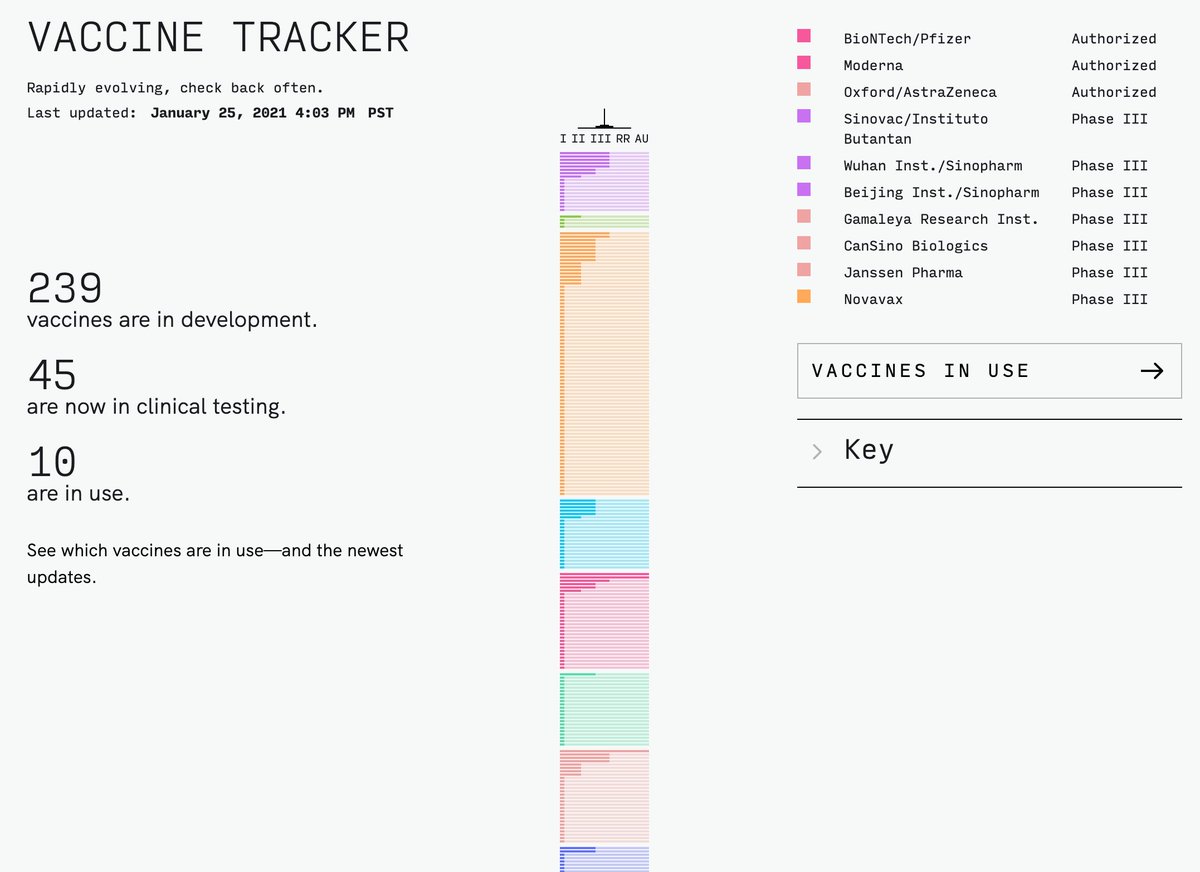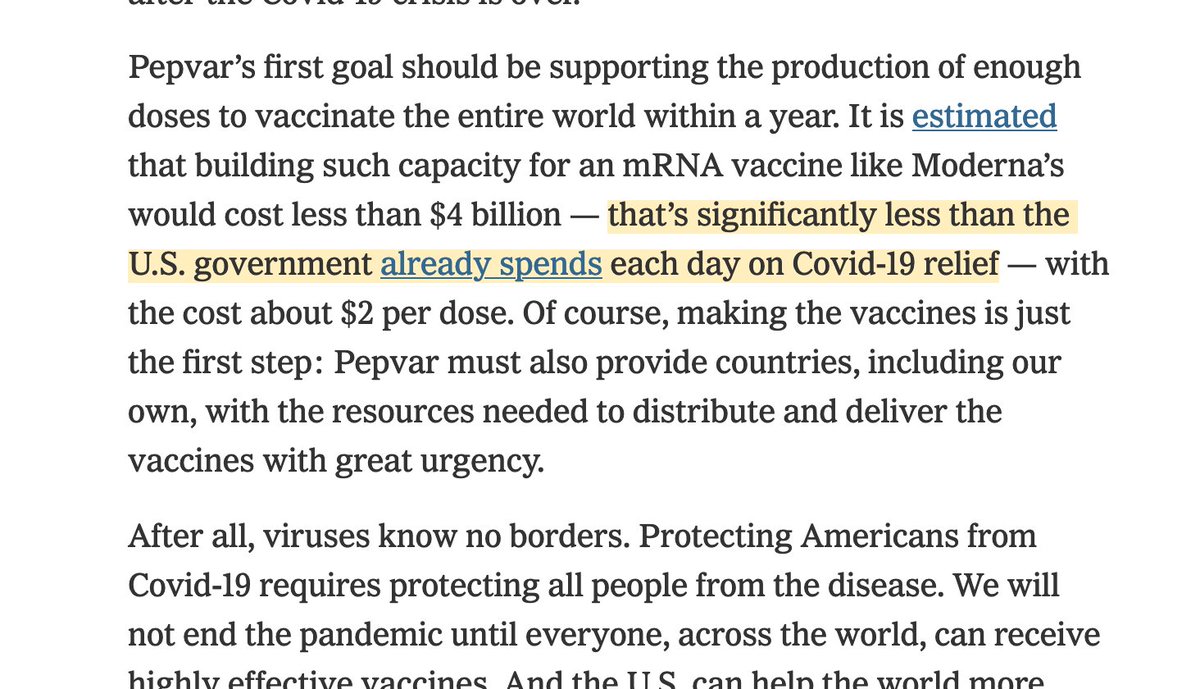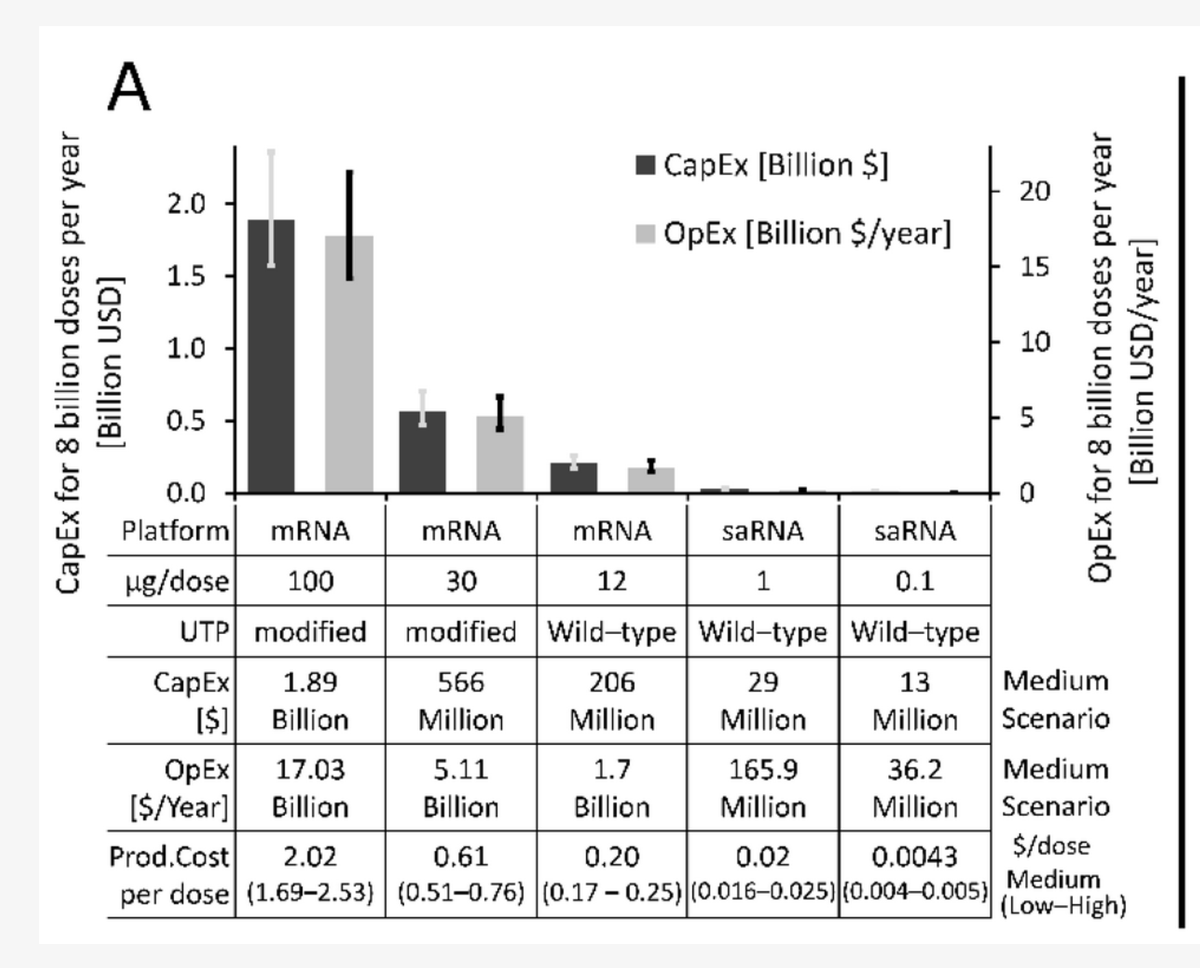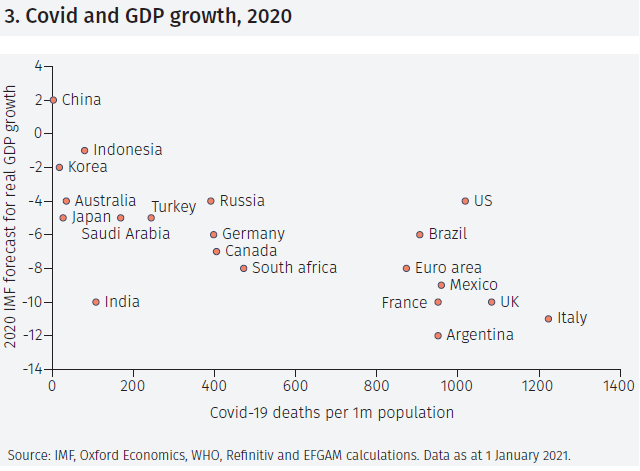
How to accelerate vaccine availability during a pandemic?
A new working paper by the experts on that question bfi.uchicago.edu/wp-content/upl…
The good news: “even at this late stage, investment to expand manufacturing capacity would have large benefits.”
A new working paper by the experts on that question bfi.uchicago.edu/wp-content/upl…
The good news: “even at this late stage, investment to expand manufacturing capacity would have large benefits.”
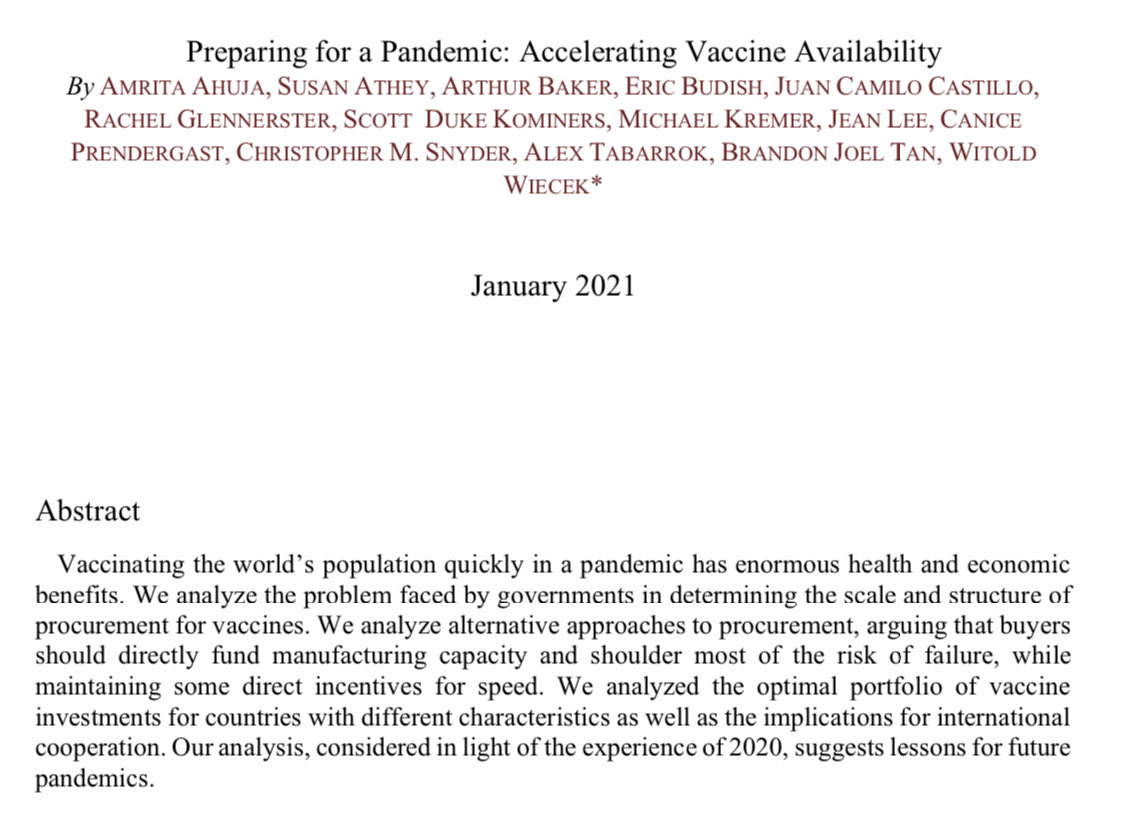
The frustrating finding “investing in the amount of capacity recommended by our model (as of August 2020) would have allowed ... the world to complete vaccination by October 2021 rather than June 2022.”
(The benefits would have been $1.14 trillion. Obvs much higher than costs.)
(The benefits would have been $1.14 trillion. Obvs much higher than costs.)
One of the key points to understand in the question of to get the world vaccinated is that the the social value of more vaccines far exceeds the commercial returns to vaccine the manufacturers from installing capacity.
They estimate that “increasing the total supply of vaccine capacity available in January 2021 from 2 billion to 3 billion courses per year generated $1.75 trillion in social value, while additional firm revenue was closer to $30bn.”
That’s a 60-fold difference.
That’s a 60-fold difference.
The other fundamental reality of vaccine production is that it is very risky for producers.
Vaccine development often fails and if that’s the case then the producers end up with the losses incurred in the costly but unsuccessful development process.
Vaccine development often fails and if that’s the case then the producers end up with the losses incurred in the costly but unsuccessful development process.
In this situation - a risky R&D process with a potential revenue that is much, much smaller than the value for society - the authors suggest that it is in the public’s interest to speed up the process by taking on the entrepreneurial risk for the vaccine production.
• • •
Missing some Tweet in this thread? You can try to
force a refresh

